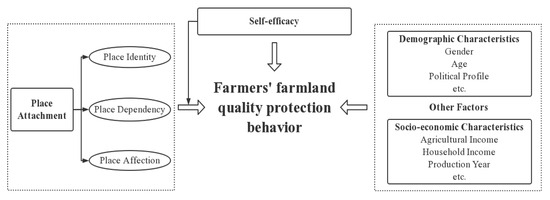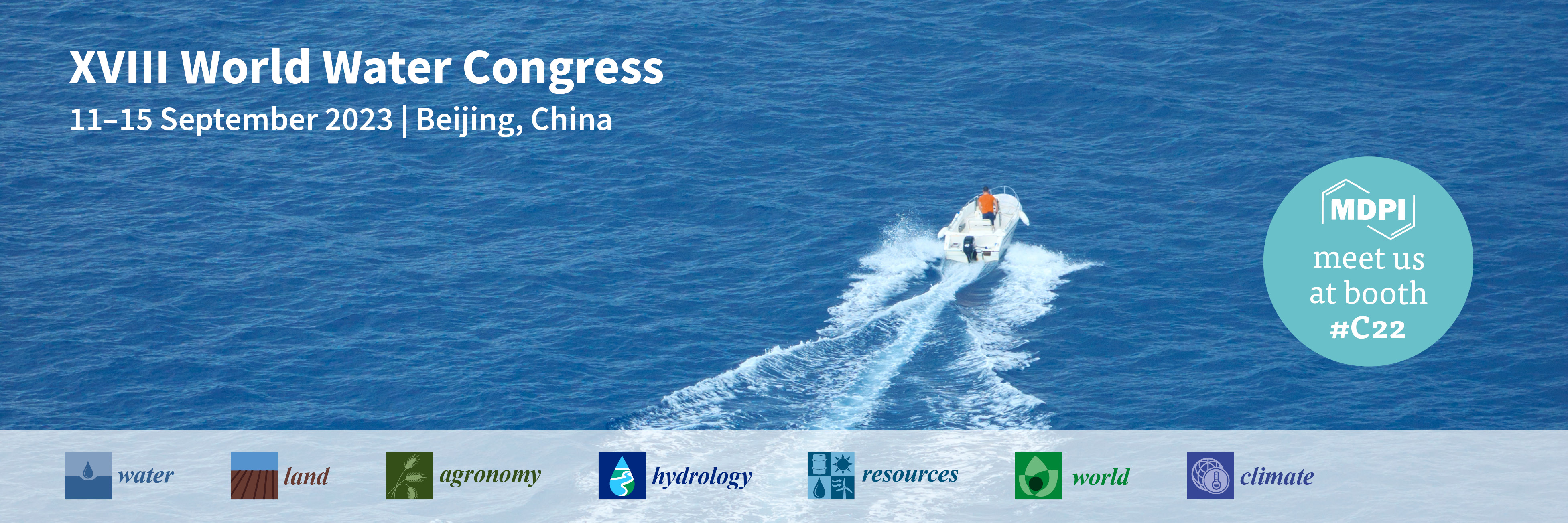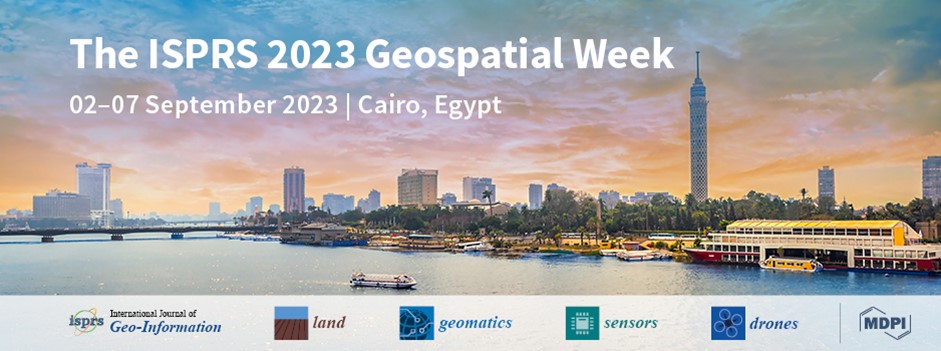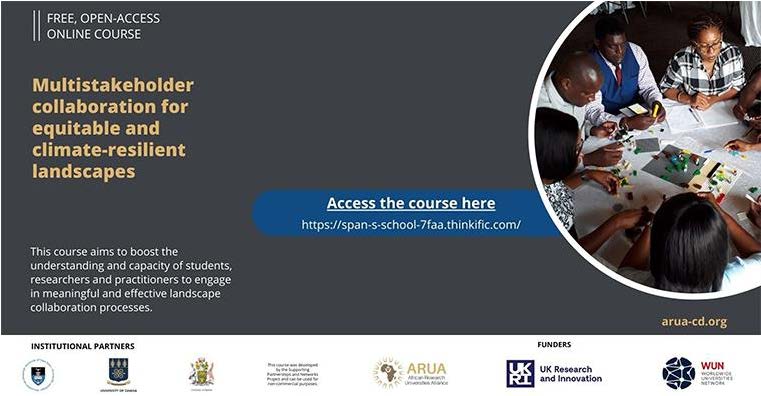-
 Mainstreaming Nature-Based Solutions in City Planning: Examining Scale, Focus, and Visibility as Drivers of Intervention Success in Liverpool, UK
Mainstreaming Nature-Based Solutions in City Planning: Examining Scale, Focus, and Visibility as Drivers of Intervention Success in Liverpool, UK -
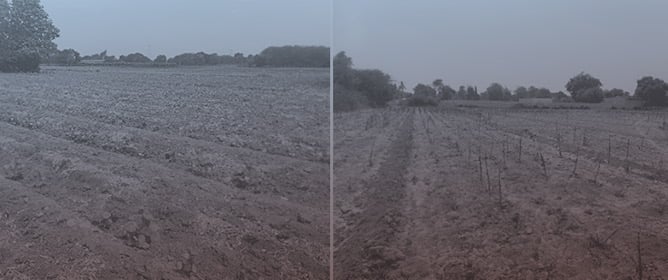 Hyperspectral Bare Soil Index (HBSI): Mapping Soil Using an Ensemble of Spectral Indices in Machine Learning Environment
Hyperspectral Bare Soil Index (HBSI): Mapping Soil Using an Ensemble of Spectral Indices in Machine Learning Environment -
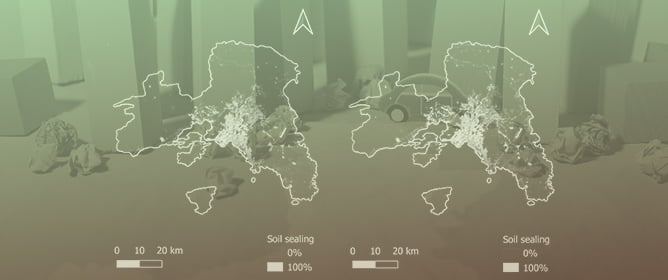 Toward Sustainable Development Trajectories? Estimating Urban Footprints from High-Resolution Copernicus Layers in Athens, Greece
Toward Sustainable Development Trajectories? Estimating Urban Footprints from High-Resolution Copernicus Layers in Athens, Greece -
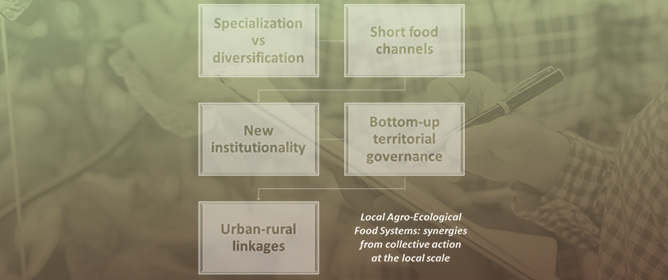 Reflecting on the Concept of Local Agroecological Food Systems
Reflecting on the Concept of Local Agroecological Food Systems
Journal Description
Land
Land
is an international and cross-disciplinary, peer-reviewed, open access journal of land system science, landscape, soil–sediment–water systems, urban study, land–climate interactions, water–energy–land–food (WELF) nexus, biodiversity research and health nexus, land modelling and data processing, ecosystem services, and multifunctionality and sustainability etc., published monthly online by MDPI. The International Association for Landscape Ecology (IALE), European Land-use Institute (ELI), Landscape Institute (LI) and Urban Land Institute (ULI) are affiliated with Land, and their members receive a discount on the article processing charge.
- Open Access— free for readers, with article processing charges (APC) paid by authors or their institutions.
- High Visibility: indexed within Scopus, SSCI (Web of Science), PubAg, AGRIS, GeoRef, RePEc, and other databases.
- Journal Rank: JCR - Q2 (Environmental Studies) / CiteScore - Q2 (Nature and Landscape Conservation)
- Rapid Publication: manuscripts are peer-reviewed and a first decision is provided to authors approximately 13.6 days after submission; acceptance to publication is undertaken in 2.6 days (median values for papers published in this journal in the first half of 2023).
- Recognition of Reviewers: reviewers who provide timely, thorough peer-review reports receive vouchers entitling them to a discount on the APC of their next publication in any MDPI journal, in appreciation of the work done.
Impact Factor:
3.9 (2022);
5-Year Impact Factor:
4.0 (2022)
Latest Articles
Place Attachment, Self-Efficacy, and Farmers’ Farmland Quality Protection Behavior: Evidence from China
Land 2023, 12(9), 1711; https://doi.org/10.3390/land12091711 (registering DOI) - 01 Sep 2023
Abstract
Farmland pollution severely threatens humanity’s sustainable development. Exploring farmland quality protection behavior (FQPB) from the farmers’ perspective is considered one of the best ways to solve the farmland pollution problem. This study develops a theoretical framework for farmers’ FQPB from the perspectives of
[...] Read more.
Farmland pollution severely threatens humanity’s sustainable development. Exploring farmland quality protection behavior (FQPB) from the farmers’ perspective is considered one of the best ways to solve the farmland pollution problem. This study develops a theoretical framework for farmers’ FQPB from the perspectives of place attachment (consisting of place identity, dependency, and affection) and self-efficacy. We conducted a primary survey of 412 corn farmers from the northwestern Chinese province of Gansu and empirically examined the effects of place attachment and self-efficacy on farmers’ FQPB and verified the moderating effects that self-efficacy exerts on the influence of place attachment on FQPB by using hierarchical regression and propensity score matching models. The results indicate that: (1) among the three dimensions of place attachment, farmers with stronger place identity and place affection are more likely to implement FQPB; conversely, farmers who exhibit stronger place dependency are less likely to engage FQPB; and (2) self-efficacy not only effectively promotes farmers’ FQPB but also has an enhancing effect on the influence of place identity and place affection on FQPB. Our results suggest that policymakers should encourage farmers to maintain a place’s image and guide farmers to participate in place construction; thus, farmers’ place identity and place affection can be fostered. Meanwhile, the government should diversify the income sources of farmers to reduce their dependency on a single source. The finding that self-efficacy effectively promotes FQPB also implied that the formulation of farmland quality protection policies should shift from traditional command-based policies to participatory approaches, utilizing the initiative of farmers to enhance the policy’s effectiveness, which can not only promote farmers’ FQPB through self-efficacy but also strengthen the positive influence of place identity and place affection on FQPB.
Full article
(This article belongs to the Section Land Socio-Economic and Political Issues)
►
Show Figures
Open AccessArticle
Spatio-Temporal Variation Characteristics of North Africa’s Climate Potential Productivity
Land 2023, 12(9), 1710; https://doi.org/10.3390/land12091710 (registering DOI) - 01 Sep 2023
Abstract
Africa is becoming one of the most sensitive and vulnerable regions of the global ecosystem due to its variable climate, complex topography, and diversity of natural ecosystems. In the context of global warming, climate change not only alters the spatial distribution of temperature
[...] Read more.
Africa is becoming one of the most sensitive and vulnerable regions of the global ecosystem due to its variable climate, complex topography, and diversity of natural ecosystems. In the context of global warming, climate change not only alters the spatial distribution of temperature and precipitation in North Africa, but also affects the spatial distribution of vegetation as well as the structure and function of ecosystems, causing changes in the North African ecosystem and inducing a series of food security problems. In this regard, this paper analyzed the spatio-temporal distribution of climate change, climate production potential (CPP), and influencing factors in Africa based on meteorological data for 1901–2019, using the Thornthwaite Memorial model, Mann–Kendall mutation test, and Pearson correlation model. The results indicated that from 1901 to 2019, the CPP in North Africa decreased by 4.9%, while the region’s precipitation experienced a decline of 5.2%. The phased trend in CPP was consistent with the change in precipitation. Temperature and precipitation were the main limiting factors for CPP in North Africa, with precipitation being more limiting. In general, North Africa’s CPP was more sensitive to precipitation, and a continued ‘warm and dry’ climate in the future could lead to an increasing downward trend.
Full article
(This article belongs to the Special Issue Sustainable Land Management, Climate Change and Food Security)
►▼
Show Figures

Figure 1
Open AccessReview
Green Hydrogen Production and Its Land Tenure Consequences in Africa: An Interpretive Review
Land 2023, 12(9), 1709; https://doi.org/10.3390/land12091709 (registering DOI) - 01 Sep 2023
Abstract
Globally, a green hydrogen economy rush is underway, and many companies, investors, governments, and environmentalists consider it as an energy source that could foster the global energy transition. The enormous potential for hydrogen production, for domestic use and export, places Africa in the
[...] Read more.
Globally, a green hydrogen economy rush is underway, and many companies, investors, governments, and environmentalists consider it as an energy source that could foster the global energy transition. The enormous potential for hydrogen production, for domestic use and export, places Africa in the spotlight in the green hydrogen economy discourse. This discourse remains unsettled regarding how natural resources, such as land and water, can be sustainably utilized for such a resource-intensive project, and what implications this would have. This review argues that green hydrogen production (GHP) in Africa has consequences where land resources (and their associated natural resources) are concerned. It discusses the current trends in GHP in Africa, and the possibilities for reducing any potential pressures it may put on land and other resource use on the continent. The approach of the review is interpretive, and hinges on answering three questions, concerning the what, why, and how of GHP and its land consequences in Africa. The review is based on 41 studies identified from Google Scholar, and sources identified via snowballed recommendations from experts. The GHP implications identified relate to land and water use, mining-related land stress, and environmental, ecological, and land-related socioeconomic consequences. The paper concludes that GHP may not foster the global energy transition, as is being opined by many renewable energy enthusiasts but, rather, could help foster this transition as part of a greener energy mix. It notes that African countries that have the potential for GHP require the institutionalization of, or a change in, their existing approaches to land-related energy governance systems, in order to achieve success.
Full article
(This article belongs to the Special Issue Land Tenure and Spatial Functions in the Living Conditions of People in a Global World)
►▼
Show Figures
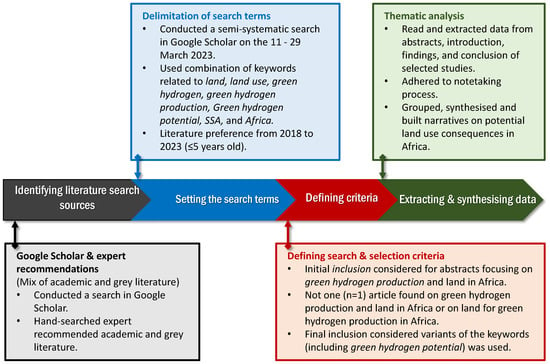
Figure 1
Open AccessArticle
Future Land Use Spatial Conflicts and Habitat Quality Impacts Based on SSPs-RCPs Scenarios—Qin-Ba Mountain City
Land 2023, 12(9), 1708; https://doi.org/10.3390/land12091708 (registering DOI) - 31 Aug 2023
Abstract
In the future, the pursuit of high-quality economic development and a focus on ecological environmental protection in China will inevitably result in significant conflicts between land use and ecological land use. Land use conflicts primarily occur in peri-urban areas characterized by prominent economic
[...] Read more.
In the future, the pursuit of high-quality economic development and a focus on ecological environmental protection in China will inevitably result in significant conflicts between land use and ecological land use. Land use conflicts primarily occur in peri-urban areas characterized by prominent economic development and urban agglomeration. As a municipality situated in the Qin-Ba mountainous region, Ankang has been promoting ecological preservation for a span of two decades. The allocation of construction areas primarily focuses on the proximity of watersheds, while the northern and southern regions are predominantly characterized by mountainous and hilly terrain, thus exhibiting distinct regional attributes. Previous studies have mainly focused on analyzing the effects of land use on habitat quality during intense urbanization, with fewer studies focusing on integrating eco-regions with urbanization to assess changes in habitat quality. However, it is important to recognize that land pressure encompasses economic, ecological, and social aspects. Additionally, it aims to provide insights for the harmonious development of land use in eco-region-oriented cities. Using the SSPs-RCPs scenarios provided by the sixth phase of the Coupled Model Intercomparison Project (CMIP6), this paper employs a system analysis method, the emerging Patch-Generating Land Use Simulation model (PLUS) model, Integrated Valuation of Ecosystem Services and Tradeoffs (InVEST) model, and Land Use Conflict Measurement model to dynamically simulate the future habitat quality and spatial conflict patterns of land use in Ankang City. The study explores the spatial coupling effect of both factors under different scenarios. The results indicate the following: (1) The overall development trend reveals an intensification of land use conflicts and a decrease in habitat quality. The expansion rate of construction land is increasing and exhibiting aggregation, while agricultural land area is expanding, and forest land area is continuously decreasing. (2) Land use intensity exhibits a significant positive correlation with land conflict levels, while land conflict levels demonstrate a significant negative correlation with habitat quality. (3) Under different future shared socioeconomic path scenarios, land use intensity, and land conflict levels follow the order of SSP585 (high forcing scenario), SSP370 (medium to high forcing scenario), SSP245 (medium forcing scenario), and SSP126 (low forcing scenario), with intensity and conflict decreasing accordingly. These findings suggest that land use has had some impact on the ecological environment, with indications of habitat degradation. Even in Ankang, where ecological development is highly valued, the city will gradually face conflicts between ecological protection and economic development in future scenarios. The city already has the environment at heart, so it will be worse in cities where the priority is economic development. Therefore, it is crucial to allocate sufficient space for economic development while simultaneously prioritizing ecological protection. The results of the study can provide a reference for analyzing the trade-offs between land development and habitat protection in eco-mountainous cities and for eco-cities to avoid falling into the conflict dilemma of economic cities.
Full article
Open AccessArticle
What Are the Impacts of Urbanisation on Carbon Emissions Efficiency? Evidence from Western China
Land 2023, 12(9), 1707; https://doi.org/10.3390/land12091707 (registering DOI) - 31 Aug 2023
Abstract
►▼
Show Figures
The contributions of this research are making the theoretical analysis of the impact mechanism of urbanisation on carbon emissions efficiency (CEE), and then empirically analysing the effects of urbanisation on CEE in Western China from 2010 to 2019 by applying the epsilon-based measure
[...] Read more.
The contributions of this research are making the theoretical analysis of the impact mechanism of urbanisation on carbon emissions efficiency (CEE), and then empirically analysing the effects of urbanisation on CEE in Western China from 2010 to 2019 by applying the epsilon-based measure model with undesirable outputs and the Tobit model. Major findings are: (1) The mean CEE of the 11 western provinces show a trend of declining and then increasing over those 10 years, demonstrating U-shaped change characteristics. (2) The CEE of Guangxi has the most significant decrease, while the CEE of Chongqing showed only a small fluctuation; the CEE of Guizhou has the characteristic that first it rises, then descends, then rises again; the CEEs of Inner Mongolia and Yunnan have been in the production frontier surface from 2010 to 2015, and presents the trend of declining, then increasing after 2015. The CEEs of the other six western provinces present a trend of declining, then increasing. (3) Chongqing, Sichuan, Inner Mongolia, and Yunnan have a high level of CEE, followed by Shaanxi, Xinjiang, Guangxi, and Guizhou, with an intermediate level of CEE, and Gansu, Ningxia, and Qinghai, with the lowest level of CEE. (4) The effects of urbanisation on CEE in Western China present a U-shaped relationship, meaning that the process of influence was first inhibition, then stimulation. At present, the process of urbanisation shows negative impacts on the CEE, while the tipping point has not yet arrived. The western provinces of China should follow the path of high-quality urbanisation to quickly shift the impact of urbanisation on CEE to the right side of the U-shaped curve.
Full article
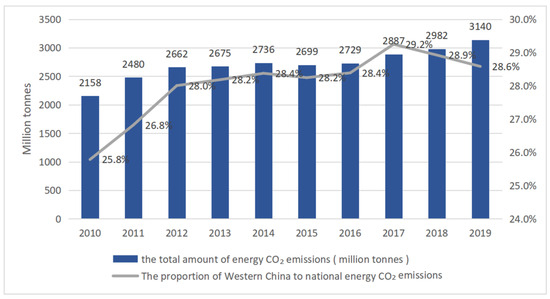
Figure 1
Open AccessArticle
Conserving the Sacred: Socially Innovative Efforts in the Loita Enaimina Enkiyio Forest in Kenya
Land 2023, 12(9), 1706; https://doi.org/10.3390/land12091706 (registering DOI) - 31 Aug 2023
Abstract
Indigenous Communities residing inside or next to autochthonal forests conserved them through governance frameworks that invoked traditional sacral law and reverence for their resource commons. More recently, however, the link between communities and forest conservation has been mired by dynamics of dispossession and
[...] Read more.
Indigenous Communities residing inside or next to autochthonal forests conserved them through governance frameworks that invoked traditional sacral law and reverence for their resource commons. More recently, however, the link between communities and forest conservation has been mired by dynamics of dispossession and displacement. Through a qualitative case study approach, using key informant interviews, transect walks, focus groups, and interviews, the researchers explore the conservation dynamics in Loita, in the South of Kenya, specifically looking at the sacred Enaimina Enkiyio forest. The study evaluated how the Loita community has challenged two state initiatives predicating conservation efforts and mobilised the sacred to conserve their resource commons. It combines a social-ecological approach with social innovation theory, spiritual geography, cultural studies and literature on indigenous knowledge systems, looking at, among others, sacred values attributed to places, nature–culture relationships, and value and belief systems and rituals. The findings point to the embeddedness of the forest resource in the way of life of the Loita Maasai and the appropriation of the ritual/sacred element as a framework to negotiate and mediate access, use, and conservation outcomes. The Loita community is grappling with and responding to the pressures exerted by various forces on the Loita Enaimina Enkiyio in socially innovative ways, as exemplified in the conservation efforts by the Ilkimpa Community Conservation Association (ICCA). It leverages aspects of the sacred in negotiating its claims over the Enaimina Enkiyio forest, showing that community-driven initiatives present alternative approaches capable of maintaining the connection between communities and their resource commons by integrating the sacred in this connection.
Full article
(This article belongs to the Special Issue Natural Landscape and Cultural Heritage)
►▼
Show Figures
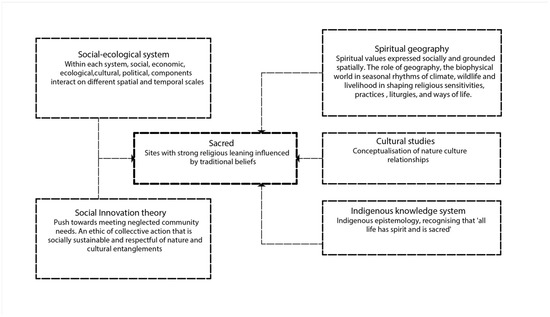
Figure 1
Open AccessArticle
Optimization Method for Land Use of the Xi’an Rail Transit Station Area Based on a Multi-Objective Model
Land 2023, 12(9), 1705; https://doi.org/10.3390/land12091705 (registering DOI) - 31 Aug 2023
Abstract
For the intensive, efficient, and sustainable utilization of land resources, it is of great significance to optimize the spatial allocation of different types of land use intensity in rail transit station areas. The current land use optimization model has some shortcomings in objective
[...] Read more.
For the intensive, efficient, and sustainable utilization of land resources, it is of great significance to optimize the spatial allocation of different types of land use intensity in rail transit station areas. The current land use optimization model has some shortcomings in objective function, constraint conditions, and the solution process. In response to this, a new multi-objective optimization model for rail transit station land use was built. With station space efficiency as the starting point, the three objectives of the model optimization were the traffic volume, environment quality, and land balance of the rail transit station, and the constraint conditions were the plot ratio, environment quality, and efficiency level. Lingo was used to solve the optimal plot ratio of different types of land use intensity. Compared with the non-inferior solution of the rail transit station area multi-objective original model, the ideal plot ratio of various land uses obtained by the optimized new model was more reasonable. There was a relatively large gap between the non-inferior solutions of some original models and the actual conditions. In contrast, the optimized new model had stronger maneuverability. The deviation ranges of the two models were −0.4% to 0.9% on the residential land plot ratio adjustment index, −3.2% to 4.8% on the public land plot ratio adjustment index, and 1.1% to 1.9% on the commercial land plot ratio adjustment index. This research aimed to provide a basis and reference for the land use and planning of Xi’an rail transit station.
Full article
(This article belongs to the Topic Urban Land Use and Spatial Analysis)
►▼
Show Figures
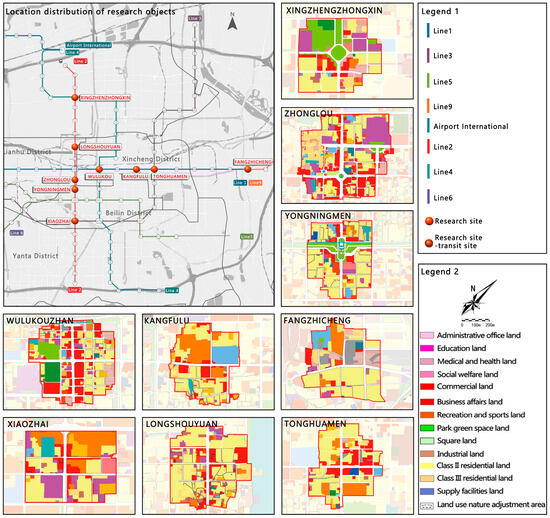
Figure 1
Open AccessArticle
Biodiversity of Soil Mesofauna Associated with the Design of Home Gardens in Mapuche Agroecosystems—Case Study in the Araucanía Region
Land 2023, 12(9), 1704; https://doi.org/10.3390/land12091704 - 31 Aug 2023
Abstract
Home gardens play a transcendental role in food sovereignty, for which the management of habitats above ground and underground are complementary strategies. This study aims to compare the biodiversity of soil mesofauna groups between agroecosystems with a conventional and an agroecological design. Through
[...] Read more.
Home gardens play a transcendental role in food sovereignty, for which the management of habitats above ground and underground are complementary strategies. This study aims to compare the biodiversity of soil mesofauna groups between agroecosystems with a conventional and an agroecological design. Through the combination of quantitative (plant inventories) and qualitative (mobile interviewing and talking maps) techniques, the units of this study was described. Soil samples were mounted in a Berlesse–Tullgren system, and the abundance, richness, diversity, and equality of soil organisms were determined. The relationships between functional groups were compared taxonomically and biocenotically. The results indicated higher equality in the conventional home garden, while the communities studied present a medium taxocenotic similarity, without great biocenotic differences. The diversity and richness of taxa, as well as the abundance in each group identified, were higher in the agroecological garden, which had more medicinal and aromatic plants.
Full article
(This article belongs to the Special Issue Local Initiatives of Agroecological Transition for the Territorialization of Food Systems)
►▼
Show Figures
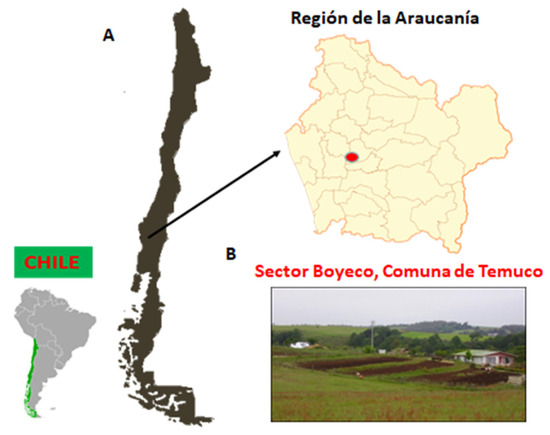
Figure 1
Open AccessArticle
Comparison of Sampling and Grid Methods for Regional Soil Erosion Assessment
Land 2023, 12(9), 1703; https://doi.org/10.3390/land12091703 - 31 Aug 2023
Abstract
To control soil erosion, the intensity, area, and distribution of regional soil erosion must be determined to accurately plan and implement corresponding soil conservation measures. Therefore, regional soil erosion assessment has received extensive attention worldwide. At present, a sampling survey approach and full-coverage
[...] Read more.
To control soil erosion, the intensity, area, and distribution of regional soil erosion must be determined to accurately plan and implement corresponding soil conservation measures. Therefore, regional soil erosion assessment has received extensive attention worldwide. At present, a sampling survey approach and full-coverage grid-based calculation are mainly applied in regional soil erosion assessment. The quantitative evaluation of the entire region depends on the quality of the data source. Furthermore, owing to the greatness of the evaluation object, the difficulty of data acquisition, the high cost, and poor usability, the present approach is bound to be at the expense of data accuracy, spatial resolution, time resolution, etc. The sampling survey approach can obtain high-precision data of soil erosion factors. Therefore, it can accurately quantify soil erosion in a field investigation unit. However, the sampling method, sampling density, and extrapolation methods have a significant impact on regional soil erosion assessments. This study considers the case of Baiquan County in the rolling hills of Northeast China as an example. Regional soil erosion evaluation using sampling survey and grid computing were compared. The impact of the data source accuracy on the soil erosion assessment was also quantitatively evaluated. The results of grid method showed a phenomenon of large rates of soil erosion and the ratio of the soil erosion area (the share of areas above the mild level), which were overestimated by 20% and 6%, respectively. A digital elevation model (DEM) with a resolution of 30 m can be used for soil erosion evaluation in plain areas, but that with the same resolution in hilly areas has insufficient calculation accuracy and provides large errors. The grid method can be adopted when land use and soil conservation measures are accurate. Otherwise, the sampling method is recommended. Interpolation of the ratio of the soil erosion area in the survey unit based on land use can better evaluate regional soil erosion.
Full article
(This article belongs to the Topic Slope Erosion Monitoring and Anti-erosion)
►▼
Show Figures
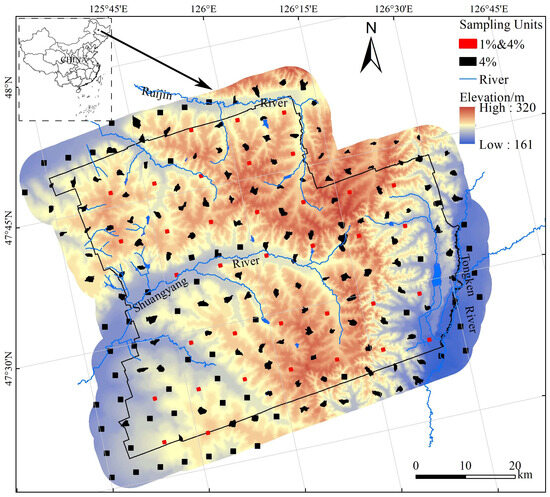
Figure 1
Open AccessArticle
Collective Resource Management and Labor Quota Systems for Sustainable Natural Resource Management in Semi-Arid Ethiopia
by
Land 2023, 12(9), 1702; https://doi.org/10.3390/land12091702 - 30 Aug 2023
Abstract
Since the mid-1970s, natural resource management package programs have been implemented mainly in the northern Ethiopian Highlands (Amhara and Tigray regions), providing participants with food-for-work (FFW) supported by donor agencies. Meanwhile, the government has sporadically implemented such programs in the Ethiopian Lowlands, including
[...] Read more.
Since the mid-1970s, natural resource management package programs have been implemented mainly in the northern Ethiopian Highlands (Amhara and Tigray regions), providing participants with food-for-work (FFW) supported by donor agencies. Meanwhile, the government has sporadically implemented such programs in the Ethiopian Lowlands, including the semi-arid Ethiopian Rift Valley (the study area). Local villagers took the initiative to manage various natural and life resources. In this study, the following factors were determined: (i) the type of village organization that manages common-pool resources (CPRs) and controls collective work, and (ii) the kind of institutional arrangements that should be implemented in participatory CPR management and small-scale village infrastructure development programs. These issues were investigated using mixed methods research, combining multivariate analyses, interviews, and field observation. The analyses were compared specifically with advanced participatory CPR management in Tigray, northern semi-arid Ethiopia. Tigray has an indigenous labor quota system (baito) and a collective grazing land management system (hizati) at the hamlet (qushet) level. Since 1991, the Tigray government has incorporated hamlets into the local administration system and supplied FFW and other incentives to participants with a high participation rate in the baito collective work. Those institutional arrangements helped reduce soil erosion rates and restore grass and tree biomass in the area. In the study area, user groups and youth and women’s associations were (and still are) institutionally fragile CPR organizations (e.g., no bylaws). In contrast, an iddir is a robust CPR organization at the hamlet (gott) level having a labor quota system (iddir system) and funds. The requirements for sustainable participatory rural development in the two regions of semi-arid Ethiopia are, first, to institutionalize a local administration system that links the district, village, and hamlet; and second, to use various incentives provided by donor agencies to strengthen their indigenous labor quota systems.
Full article
(This article belongs to the Section Land Socio-Economic and Political Issues)
►▼
Show Figures
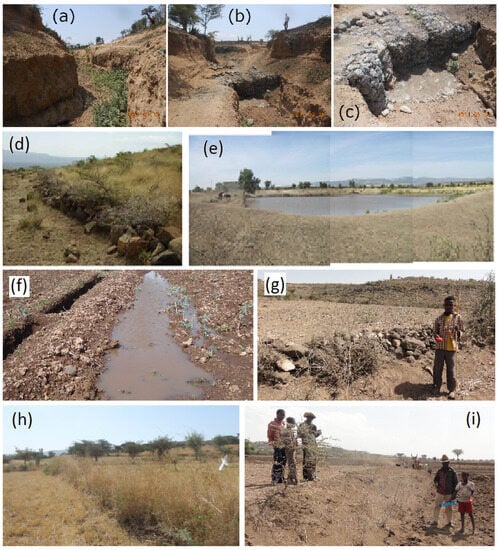
Figure 1
Open AccessArticle
Spatial Association Rules and Thermal Environment Differentiation Evaluation of Local Climate Zone and Urban Functional Zone
Land 2023, 12(9), 1701; https://doi.org/10.3390/land12091701 - 30 Aug 2023
Abstract
Urban heat islands (UHIs) caused by urbanization have become a major issue affecting the sustainable development of the ecological environment. The distribution of UHIs is mainly affected by the reflection and transmission of heat radiation caused by differences in urban spaces, and the
[...] Read more.
Urban heat islands (UHIs) caused by urbanization have become a major issue affecting the sustainable development of the ecological environment. The distribution of UHIs is mainly affected by the reflection and transmission of heat radiation caused by differences in urban spaces, and the anthropogenic heat emissions caused by social activities. At present, the research on the urban thermal environment involves two spatial classification systems: local climate zone (LCZ), based on urban morphology and spatial patterns; and urban functional zone (UFZ), based on socio-economic activities. It is not clear whether there are association rules between these two systems in different cities. Against this background, this study explores the association rules between the UFZ and LCZ classification systems using the selected Chinese cities in different regions as typical examples. Our results confirm that there are common association rules from UFZ to LCZ, as the form of buildings is greatly influenced by the types of functional areas in urban construction. Specifically, the medical zone corresponds to the compact mid-rise zone (LCZ2); the business service area and the office area also correspond to the compact zone (LCZ1-LCZ3); and the industrial area corresponds to the compact low-rise zone (LCZ3). These functional zones have the same association rules in different cities. The cross-regional mining of the relationship between different urban functional systems will help to coordinate different planning departments and carry out the integration of multiple spatial plans. Furthermore, we found that LCZ has a better differentiation effect on the surface temperature through our comparison research, which makes it more suitable as a reference for research on the thermal environment and the heat island effect.
Full article
(This article belongs to the Section Land Systems and Global Change)
►▼
Show Figures
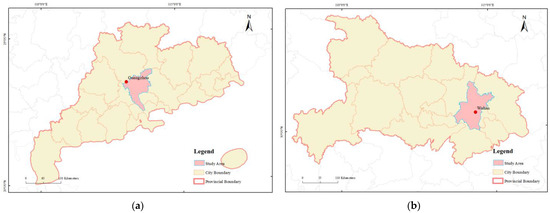
Figure 1
Open AccessArticle
Erosion Control Performance of Improved Soil Management in Olive Groves: A Field Experimental Study in NE Portugal
Land 2023, 12(9), 1700; https://doi.org/10.3390/land12091700 - 30 Aug 2023
Abstract
Olive groves rank among the cropping systems facing higher erosion risk in Mediterranean Europe. The adoption of erosion control soil management practices is key for reducing such risk and driving olive production towards sustainability. This field experimental study aimed to quantify the erosion
[...] Read more.
Olive groves rank among the cropping systems facing higher erosion risk in Mediterranean Europe. The adoption of erosion control soil management practices is key for reducing such risk and driving olive production towards sustainability. This field experimental study aimed to quantify the erosion control performance of improved soil management as compared to conventional soil management in olive groves of NE Portugal. The design aimed to compare the effects of introducing no-tillage (NT) to a conventionally managed (T) olive grove and those with complementing ground cover by adventitious species (NS) with a sown cover (S) and comprised four treatments: TNS (reference for conventional), TS, NTNS and NTS. Erosion microplots (4 m2) were installed (two per treatment), recording soil loss, runoff and ground cover in seven erosion events throughout one year. The best erosion control performance was found in NTNS (low-cost improved soil management treatment) with 50% and 85% reductions in soil loss, respectively, in the annual total and in erosion events following large precipitation periods. Plots with adventitious vegetation ground cover performed better in soil loss control than the sown ones. Converting to no-tillage, as compared to sowing herbaceous vegetation to increase ground cover, proved more performant and less hazardous for improving erosion control in olive groves.
Full article
(This article belongs to the Special Issue Surface Runoff and Soil Erosion in the Mediterranean Region)
►▼
Show Figures
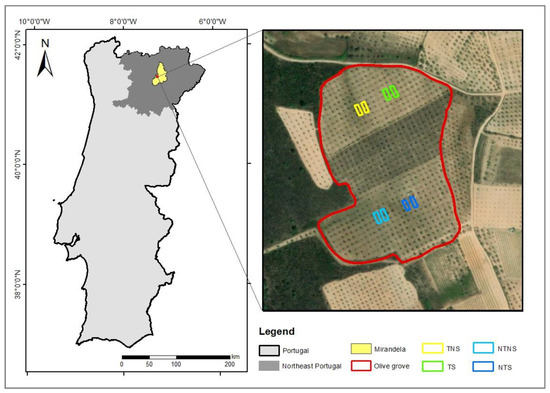
Figure 1
Open AccessReview
Influence of Urban Tree Traits on Their Ecosystem Services: A Literature Review
by
and
Land 2023, 12(9), 1699; https://doi.org/10.3390/land12091699 - 30 Aug 2023
Abstract
Trees in cities are vital to the health of the urban ecosystem and residents’ wellbeing. Besides providing habitats, trees provide food via fruits and young leaves, reduce temperature, and enrich landscape aesthetics with spring flowers and autumn foliage. The generation and supply of
[...] Read more.
Trees in cities are vital to the health of the urban ecosystem and residents’ wellbeing. Besides providing habitats, trees provide food via fruits and young leaves, reduce temperature, and enrich landscape aesthetics with spring flowers and autumn foliage. The generation and supply of these ecosystem services are closely related to their traits, such as the size of the canopy and the sparseness of the leaves, which directly affect their ability to shade and cool. Studies focusing on ecosystem services often consider green space as a whole, and some distinguish the difference between trees and grass. Relatively fewer studies examined the influence of tree traits on the supply of ecosystem services. Understanding the association among species, traits, and ecosystem services would be helpful in generating actionable knowledge for urban tree planting. However, these studies are often scattered under different research topics. To this end, we reviewed and summarized studies on the relationship between urban tree species/traits and ecosystem services according to provision, regulation, and cultural service types. Based on 45 publications, we found that leaf area, crown size, diameter at breast height, tree height, and leaf shape may influence various ecosystem services. We presented a preliminary framework of “trait- service” and argued that with the help of such a framework, future research should generate actionable knowledge for practitioners to identify potential tree species for selection according to desired services.
Full article
(This article belongs to the Collection Collection for the International Association for Landscape Ecology (IALE))
►▼
Show Figures

Figure 1
Open AccessArticle
System Dynamics-Based Game Theoretical Analysis for Watershed Eco-Compensation Design: A Case Study in Tuojiang River, Sichuan Province, China
Land 2023, 12(9), 1698; https://doi.org/10.3390/land12091698 - 30 Aug 2023
Abstract
►▼
Show Figures
Eco-compensation is an important policy tool to trade off economic development and environmental protection in a watershed. This study introduced the gross ecosystem product (GEP) accounting system to identify the eco-compensation provider (ECP) and eco-compensation receiver (ECR) of a river basin. Then, a
[...] Read more.
Eco-compensation is an important policy tool to trade off economic development and environmental protection in a watershed. This study introduced the gross ecosystem product (GEP) accounting system to identify the eco-compensation provider (ECP) and eco-compensation receiver (ECR) of a river basin. Then, a cooperative game model and a non-cooperative game model between the ECP and the ECR were established, in which system dynamics was incorporated into the game theoretical analysis to aid selection of the optimal compensation scheme. The study further demonstrated the model applications by taking the Tuojiang River Basin as a case. The results showed that the accounted GEP increased from CNY 32.2 billion in 2018 to CNY 35.5 billion in 2020, with a growth rate of 10.2%. Deyang City, as an ECP, had a cumulative difference of CNY 11.759 billion between its accounted GEP and actual GEP output over the three years. Neijiang City, Zigong City, and Luzhou City were taken as the ECR, receiving the GEP revenues as CNY 11.289 billion, 7.661 billion, and 1.497 billion, respectively. Chengdu City changed from the ECP to the ECR and ultimately to the ECP. However, Ziyang City and Meishan City changed from the ECP to the ECR. The eco-compensations increased to varying degrees during 2018–2020 in both game scenarios, with ECP payments and ECR revenues increasing by 16.5% and 4.6% in the non-cooperative game and by 5.0% and 50.8% in the cooperative game. Particularly, the eco-compensation obtained by the cooperative game had better environmental and economic performance, as there was a total of CNY 7.049 billion being saved. However, there was no savings of compensation by the non-cooperative game. It is expected that the results may provide insight into the design of the eco-compensation standard for a river basin.
Full article
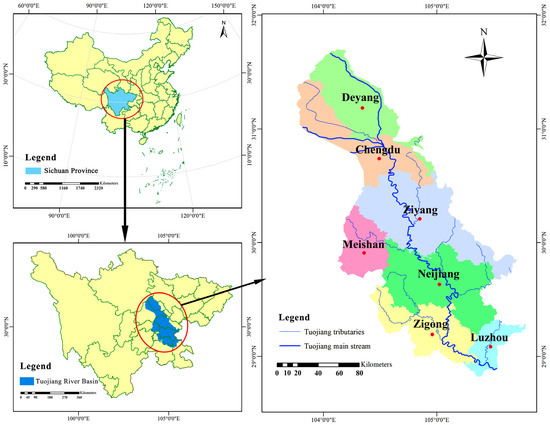
Figure 1
Open AccessArticle
The Power of Radical Place-Making Practices: Lessons Learned from ufaFabrik in Berlin
by
Land 2023, 12(9), 1697; https://doi.org/10.3390/land12091697 - 30 Aug 2023
Abstract
This article investigates ufaFabrik’s practice within Berlin’s urban context, which emerged from an occupation of an abandoned site and evolved into a long-term experiment in radical place-making. Through this case study analysis, it explores the role of radical place-making in shaping urban policy,
[...] Read more.
This article investigates ufaFabrik’s practice within Berlin’s urban context, which emerged from an occupation of an abandoned site and evolved into a long-term experiment in radical place-making. Through this case study analysis, it explores the role of radical place-making in shaping urban policy, focusing on the dimensions of decision, place and policy. Drawing on an expanded conceptualisation of place-making that embraces a radical perspective, the study is based on a Ph.D. programme and on extensive field research. ufaFabrik has given place-making a political meaning, challenging conventional urban planning in relation to ‘undecided’ spaces. This paradigm of place-making represents grassroots activism and insurgent action and it can catalyse both local and urban transformations. Through a critical analysis of the limits and possibilities of radical place-making practice, the article argues that the ufaFabrik offers valuable insights into the potential of participatory and community-led approaches to reshape urban spaces and promote more inclusive and sustainable forms of urban governance. The study highlights how the re-politicisation of urban issues emerges from conflict and challenges established power dynamics. It highlights the interconnection between ‘place’ and ‘making’, weaving experiential and generative elements into the urban discourse, highlighting its transformative potential and reconfiguration of decision-making dynamics.
Full article
(This article belongs to the Special Issue Dynamics of Cultural and Social Innovation in Urban Development)
►▼
Show Figures
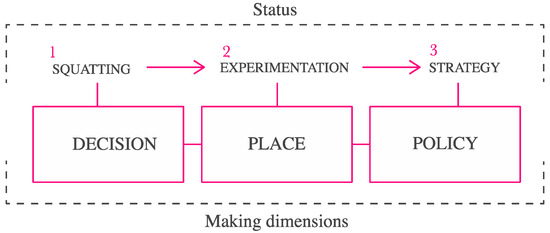
Figure 1
Open AccessEssay
Impact of Land Cover Changes on Soil Type Mapping in Plain Areas: Evidence from Tongzhou District of Beijing, China
Land 2023, 12(9), 1696; https://doi.org/10.3390/land12091696 - 29 Aug 2023
Abstract
►▼
Show Figures
The flat terrain in the plain areas of Beijing, China makes the land easily accessible for cultivation and farming, providing vast opportunities for agricultural development. Meanwhile, these areas are also crucial for urban construction and economic growth. Soil type mapping plays a key
[...] Read more.
The flat terrain in the plain areas of Beijing, China makes the land easily accessible for cultivation and farming, providing vast opportunities for agricultural development. Meanwhile, these areas are also crucial for urban construction and economic growth. Soil type mapping plays a key role in understanding soil characteristics and guiding land management practices. However, accurately mapping soil types in plain regions can be challenging due to their low spatial variability and diverse land use types. Although land cover changes due to phenomena such as urbanization, agricultural expansion, and conversion of natural vegetation can significantly affect soil properties and distribution patterns, their impacts on soil type mapping remain unclear. This study investigated the impacts of land cover changes in plain areas on the accuracy of soil type mapping, hoping to provide effective assistance for soil type mapping in plain areas by analyzing their coupling relationship. Focusing on the 20 year land cover changes in Tongzhou District, this study utilizes a unified approach that combines expert knowledge, mixed sampling methods, and RF mapping techniques, while incorporating environmental covariates that have minimal period influence and synergistically using NDVI and land cover data from the same year. Transition matrices are used to reveal land cover changes, confusion matrices, and their derived indicators to analyze changes in soil type mapping accuracy, and coupling analysis is conducted between soil type change areas and land cover change areas. The results show that Tongzhou District has experienced rapid development over the past 20 years, with the area of construction land nearly doubling. Additionally, 29% of arable land has been converted into construction land, resulting in an increase in the accuracy of the soil map from 58.99% to 66.91% over the 20 year period. The soil type change area during this period accounts for 16.5% of the total area, with 51.9% of the changed areas overlapping with land cover change areas. These overlapping regions are predominantly influenced by human activities. In terms of cultivated land types in the study area, the quantity of arable land has decreased by approximately 29% over 20 years, while the proportion of Sandy loam calcareous fluvo-aquic soil and Light loam calcareous fluvo-aquic soil, which constitute nearly half of the soil type, has increased. These data demonstrate the coupling relationship between land cover changes and soil type variations. It is evident that improving the extent of land use in plain areas enhances the credibility of soil type mapping. Meanwhile, human activities impact land cover, which, in turn, affects and reflects changes in the soil type.
Full article
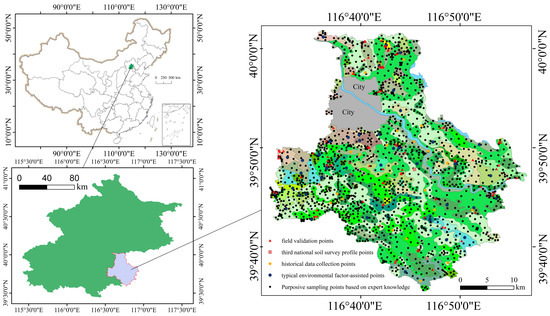
Figure 1
Open AccessArticle
Spatiotemporal Variations in the Carbon Sequestration Capacity of Plateau Lake Wetlands Regulated by Land Use Control under Policy Guidance
Land 2023, 12(9), 1695; https://doi.org/10.3390/land12091695 - 29 Aug 2023
Abstract
Lake wetlands play a crucial role in mitigating climate change. Human activities and climate change impact the carbon sequestration capacity of lake wetlands. However, this process is intricate. Clarifying the decisive factors that affect carbon sequestration is crucial for preserving, utilizing, and enhancing
[...] Read more.
Lake wetlands play a crucial role in mitigating climate change. Human activities and climate change impact the carbon sequestration capacity of lake wetlands. However, this process is intricate. Clarifying the decisive factors that affect carbon sequestration is crucial for preserving, utilizing, and enhancing the carbon sequestration capacity of plateau lake wetlands. Here we analyzed the regulatory role of land use under policy guidance on the carbon sequestration capacity of the plateau lake wetland of Caohai (CHLW), SW China. The results show that: (1) The cumulative carbon sequestration varied significantly from 1990 to 2020, with the highest carbon sequestration of 15.80 × 105 t C in 1995 and the lowest of 3.18 × 105 t C in 2020, mainly originating from endogenous carbon sequestration within the plateau lake wetlands. (2) As of 2020, the carbon stock of CHLW was approximately 2.54 × 108 t C. (3) The carbon sequestration in CHLW experienced a dynamic change process of decrease-increase-decrease over 30 years, mainly influenced by land use changes under policy regulation, with human and natural factors accounting for 91% and 9%, respectively. (4) Under three simulated scenarios (Q1, Q2, and Q3), the ecological priority scenario exhibited positive regulation on the carbon sequestration of CHLW and the entire protected area in 2030 and 2060, with the highest increase in carbon sequestration. This scenario is consistent with the current conservation policy, indicating that the current protection policy for CHLW is scientifically reasonable. This research demonstrates how land use and climate changes impact carbon storage in wetlands, with consideration of policy guidance. It provides references for utilizing and conserving lake wetlands worldwide, ultimately achieving the dual goals of wetland conservation and carbon neutrality.
Full article
(This article belongs to the Topic Karst Environment and Global Change)
►▼
Show Figures
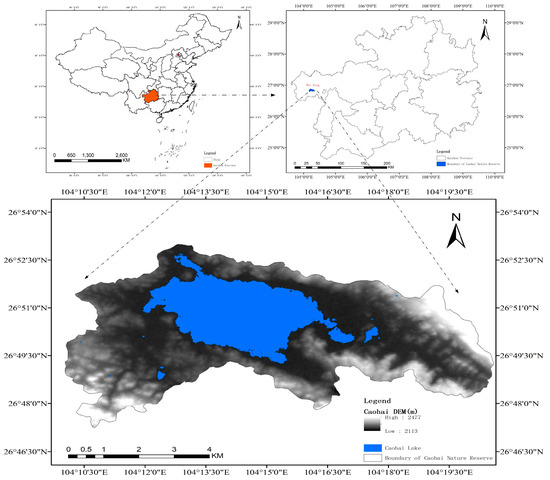
Figure 1
Open AccessArticle
Country Perspectives on Hay-Making Landscapes as Part of the European Agricultural Heritage
by
, , , , , , , , , , , , , , and
Land 2023, 12(9), 1694; https://doi.org/10.3390/land12091694 - 29 Aug 2023
Abstract
This paper provides an overview of traditional hay-making structures and the related agricultural landscapes in Europe. The information was collected using a standardised questionnaire that was completed by experts from different countries. What all countries had in common was that hay production with
[...] Read more.
This paper provides an overview of traditional hay-making structures and the related agricultural landscapes in Europe. The information was collected using a standardised questionnaire that was completed by experts from different countries. What all countries had in common was that hay production with its corresponding structures was widespread. However, the scope and importance differed among the countries today. We found differences in type and extent, in degree of awareness, and in the cultural meaning of hay-making structures. The differences were connected with built structures, as well as with other tangible and intangible aspects of cultural heritage. The distribution of the broad variety of hay-making-related structures, especially semipermanent ones, has changed throughout history, as well as the hay-making techniques, as a result of agrarian specialisation, land reclamation, and consolidation. Today, in some countries, the relevance of hay-making was mainly connected to horse keeping and landscape management (like in Germany and Hungary), while in others (like Slovakia and Slovenia), it was still predominantly used for cattle and sheep.
Full article
(This article belongs to the Special Issue The Dynamics of Biodiversity and Landscape Ecology: Patterns, Processes, and Planning)
►▼
Show Figures
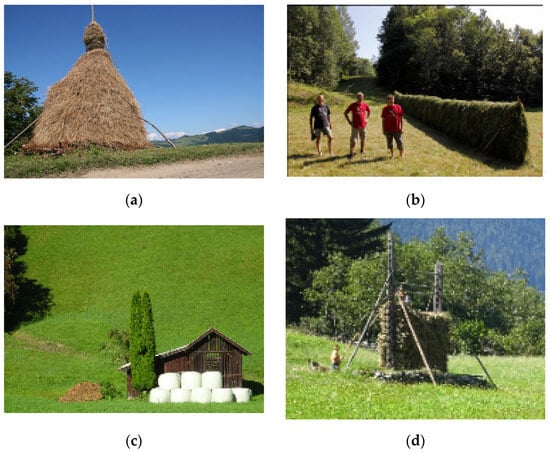
Figure 1
Open AccessArticle
Improving the Chemical Properties of Acid Sulphate Soils from the Casamance River Basin
Land 2023, 12(9), 1693; https://doi.org/10.3390/land12091693 - 29 Aug 2023
Abstract
The anoxic conditions produced after the reflooding of acid sulphate soil (ASS) can reduce sulphate and/or Fe(III) with a consequent rise in pH. This study aimed to compare the effect of different amendments on ASS remediation and to analyse the effect on soil
[...] Read more.
The anoxic conditions produced after the reflooding of acid sulphate soil (ASS) can reduce sulphate and/or Fe(III) with a consequent rise in pH. This study aimed to compare the effect of different amendments on ASS remediation and to analyse the effect on soil pH and exchangeable aluminium. Two mid-term incubation experiments were carried out to analyse the effect of amendments and water management on ASS. Soil samples were taken in the Santak Valley from four agricultural plots. During the first experiment, each soil sample was subject to two water management systems (flooded and non-flooded) and three amendment types (rice straw, manure, and lime). During the second experiment, the flooded condition was performed with three organic amendments (rice straw, manure, and biochar). In the first experiment, the amendments with organic matter (rice straw, and manure) increased the pH more under the flooded conditions, and manure was effective in reducing exchangeable aluminium (Alex) to 45% in the control soil. In the second experiment, all the organic amendments reduced soluble Al, but whereas straw increased soluble Fe, biochar diminished it. The amendment addition increased the soil pH and reduced Alex. The Alex reduction was greater for the stabler organic amendments: manure and biochar.
Full article
(This article belongs to the Special Issue Soils for the Future)
►▼
Show Figures
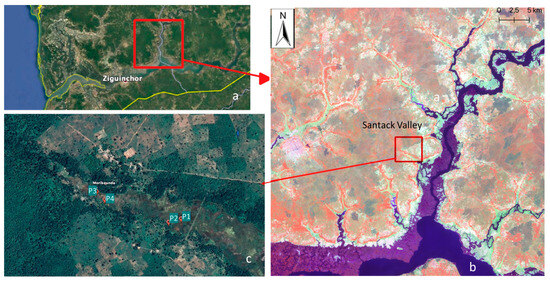
Figure 1
Open AccessArticle
Temporal and Spatial Variation in Vegetation and Its Influencing Factors in the Songliao River Basin, China
Land 2023, 12(9), 1692; https://doi.org/10.3390/land12091692 - 29 Aug 2023
Abstract
As an important part of soil and water conservation, ecological stability, and climate regulation, vegetation is sensitive to climate change and human disturbance. At present, there is a lack of research on the dynamic changes to vegetation in river basins and sub-basins from
[...] Read more.
As an important part of soil and water conservation, ecological stability, and climate regulation, vegetation is sensitive to climate change and human disturbance. At present, there is a lack of research on the dynamic changes to vegetation in river basins and sub-basins from a holistic and partial perspective, which limits our ability to understand the spatial heterogeneity of vegetation changes and their influencing factors. In this study, the spatial and temporal variations of vegetation and their influencing factors in the Songliao River Basin (SLB) from 2000 to 2020 were analyzed using Sen’s trend method, the Mann–Kendall test, the coefficient of variation method, and the Geodetector method. The results showed that the NDVI (normalized difference vegetation index) in the SLB exhibited an increasing trend of 0.003 yr−1, indicating that the vegetation was greening. In general, climatic factors and soil type were the dominant factors affecting the spatial differentiation of the NDVI in the SLB and sub-basin units. The interactions between the influencing factors were all enhanced, and the population density highlighted its influence on reflected vegetation changes. We also focused on analyzing the spatial differentiation of vegetation changes and influencing factors in the sub-basins. The research results provide a basis for the ecological restoration and stability of the basin.
Full article
(This article belongs to the Special Issue Terrestrial Vegetation Dynamics and Its Response to Environmental Change)
►▼
Show Figures
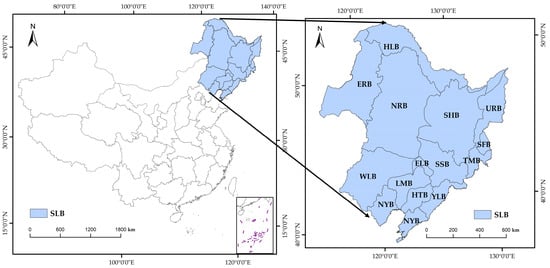
Figure 1

Journal Menu
► ▼ Journal Menu-
- Land Home
- Aims & Scope
- Editorial Board
- Reviewer Board
- Topical Advisory Panel
- Instructions for Authors
- Special Issues
- Topics
- Sections & Collections
- Article Processing Charge
- Indexing & Archiving
- Editor’s Choice Articles
- Most Cited & Viewed
- Journal Statistics
- Journal History
- Journal Awards
- Society Collaborations
- Conferences
- Editorial Office
Journal Browser
► ▼ Journal BrowserHighly Accessed Articles
Latest Books
E-Mail Alert
News
Topics
Topic in
Diversity, Forests, IJPB, Land, Plants
Forest Ecosystem Restoration
Topic Editors: Dominick A. DellaSala, Lin Qi, Wangming ZhouDeadline: 15 November 2023
Topic in
Atmosphere, Climate, Land, Remote Sensing, Sensors
Progress in Satellite Remote Sensing of Land Surface: New Algorithms, Sensors, and Datasets
Topic Editors: Shengli Wu, Lingmei Jiang, Jinyang Du, Kebiao Mao, Tianjie ZhaoDeadline: 30 December 2023
Topic in
Buildings, Forests, IJERPH, Land, Urban Science
Bioclimatic Designs to Enhance Urban/Rural Resilience
Topic Editors: Bo Hong, Dayi Lai, Zhi Gao, Yongxin Xie, Kuixing LiuDeadline: 31 December 2023
Topic in
Energies, Geosciences, Land, Remote Sensing, Water
Urban Hydrogeology Research
Topic Editors: C. Radu Gogu, Oana LucaDeadline: 31 January 2024

Conferences
Special Issues
Special Issue in
Land
Critical Insights on Tenure Security in the Global South
Guest Editors: Laura German, Howard SteinDeadline: 1 September 2023
Special Issue in
Land
Arable Land Quality: Observation, Estimation, Optimization and Application
Guest Editors: Changqing Song, Yakov Kuzyakov, Feng Cheng, Xiangbin Kong, Zhe Feng, Peichao Gao, Sijing YeDeadline: 15 September 2023
Special Issue in
Land
Water in Land System Science
Guest Editors: Jacqueline M. Vadjunec, Todd Fagin, Thomas Lavanchy, Kate Zeigler, Bruce HoaglandDeadline: 30 September 2023
Special Issue in
Land
Land Use Mapping as the Base for Modeling and Earth Oriented Digital Twins
Guest Editor: Karel CharvatDeadline: 20 October 2023
Topical Collections
Topical Collection in
Land
Land Use Transitions and Land System Science
Collection Editor: Hualou Long
Topical Collection in
Land
Land Systems in Transition: Challenges, Approaches, and Pathways for a Sustainable Development
Collection Editors: Ileana Pătru-Stupariu, Christine Fürst
Topical Collection in
Land
Integrated Management, Planning, and Policy for Sustainable Landscape Development in Europe
Collection Editor: Marcin Spyra
Topical Collection in
Land
Collection for the International Association for Landscape Ecology (IALE)
Collection Editor: Weiqi Zhou



